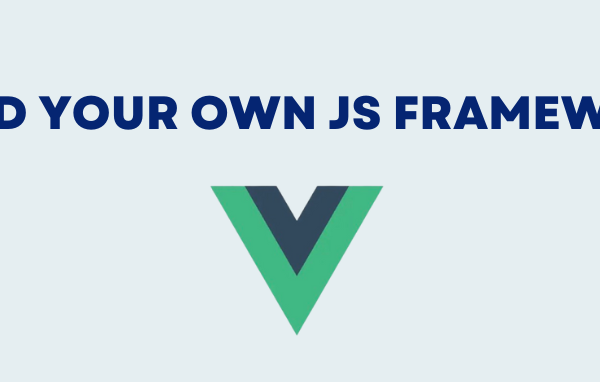Before I start to explain what an NFT is, let’s have a look at some examples. I tried to gather different styles of NFTs in the high price segment. There are of course also NFTs for 100$ and less.
Sold for $210’000
LeBron James: Dunk, From the Top (Series 1)
Source: https://nbatopshot.com/moment/bigdog_brothers+2499f572-8280-4057-ac27-5603971de95d
Sold for $888’888
Hairy: Musician, fashion designer, and entrepreneur Steve Aoki recently collaborated with 3D illustrator Antoni Tudisco to produce the eclectic piece known simply as ‘Hairy’ (A blue bespectacled creature bopping to one of Aoki’s beats in a 36-second clip).
Source: https://niftygateway.com/itemdetail/primary/0xbeccd9e4a80d4b7b642760275f60b62608d464f7/1
Sold for $2.9 million
First Twitter Tweet: First tweet posted by Twitter founder and CEO Jack Dorsey

Sold for $69 million
EVERYDAYS: THE FIRST 5000 DAYS: The artwork, created by famed digital artist Mike “Beeple” Winkelmann represents a collage of 5,000 of Beeple’s earlier artworks
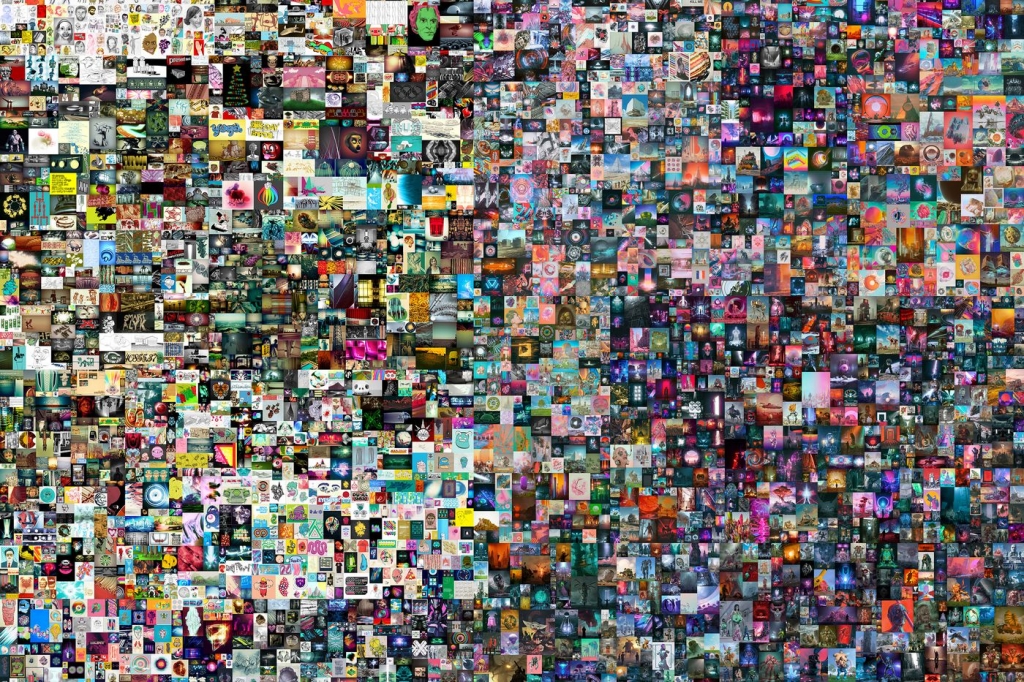
What is an NFT?
As you saw in the few examples, NFTs can be anything. It could be a tweet, a digital painting, a video clip, an animation, music, a 3D model, a picture, a GIF or even virtual land in a blockchain-based game. To further explain what NFT exactly means, it’s easier to split the word and have a closer look at Non-Fungible and Token.
NFT = Non-fungible token
Non-fungible
The official definition of fungible is “to be substituted for something of equal value or utility; interchangeable, exchangeable, replaceable”. For now, let’s replace the word fungible with replaceable. So non-fungible means non-replaceable. Let’s make some examples:
Physical fungible (replaceable)
- CHF Coins and CHF Notes (my 10 Swiss Franc note has the same value as 10 x 1 Swiss Franc coins)
- Precious metals like gold and silver (my 1kg gold bar has the same value as your 1kg gold bar)
Virtual fungible (replaceable)
- Bitcoins and other crypto currencies (my 0.00001 BTC has the same value as your 0.00001 BTC)
Physical non-fungible (non replaceable)
- Historic Coins (the first 1 Swiss Franc coin, or a limited special edition coin. The value is not really defined. Also the first 1 Swiss Franc coin has not the same value as the current 1 Swiss Franc coin)
- Art (like paintings from Banksy. It’s unique and the value is only defined by the potential buyers. If a painting is destroyed, it’s not replaceable by another “similar” one)
Virtual non-fungible (non replaceable)
- Tweets
- NBA Dunks
- Art (image, video, 3D model, music)
Token
The token certifies a digital asset to be unique and therefore not interchangeable. It’s proof of ownership that is stored on the blockchain (in this case: Ethereum). While someone can sell an NFT representing his work, the buyer does not necessarily receive copyright privileges if ownership of the NFT changes, allowing the original owner to create further NFTs of the same work. An NFT is merely proof of ownership separate from copyright.
NFT Properties
| Unique | Provably Scarce | Indivisible |
|---|---|---|
| Each NFT has different properties that are usually stored in the token’s metadata. | There is usually a limited number of NFTs with an extreme example of having only 1 copy, the number of tokens can be verified on the blockchain, hence its provability. | Most NFTs cannot be split into smaller denominations, so you cannot buy or transfer a fraction of your NFT. |
The dark side of NFTs
NFTs are stored on ETH (Ethereum) Blockchain, which is currently using 51 TWh/year. That’s 51’000’000’000 kWh/year (comparable to the power consumption of the whole of Portugal). If we calculate the carbon footprint, it’s 30’000’000 tons of CO2/year. You could drive 121’000’000’000 km with a car to have the same emissions as ETH has in one year.
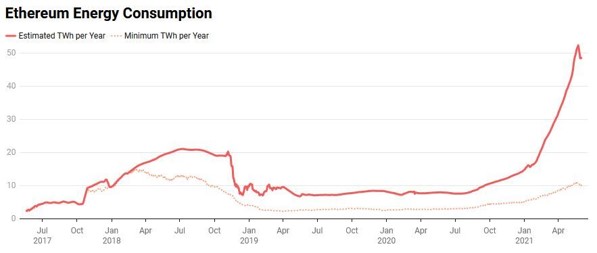
Create your own NFT
The process is very simple and creating an NFT at OpenSea is done in a few minutes. I decided to go for OpenSea because it’s the most popular marketplace and easiest to use.
Create account, collection and item
- Create digital art (image, video, audio, or 3D model) with your favourite tools. I did it with Adobe Photoshop and Adobe Premiere.
- Create an account at OpenSea. I used MetaMask as my wallet. You can also choose other wallets. If using MetaMask, it’s the easiest to have it installed as a Chrome/Firefox addon.
- Create a collection and add a new item to it.
- Upload your art (file types supported: JPG, PNG, GIF, SVG, MP4, WEBM, MP3, WAV, OGG, GLB, GLTF. Max size: 40 MB) and give it a name. That’s all you need for now!
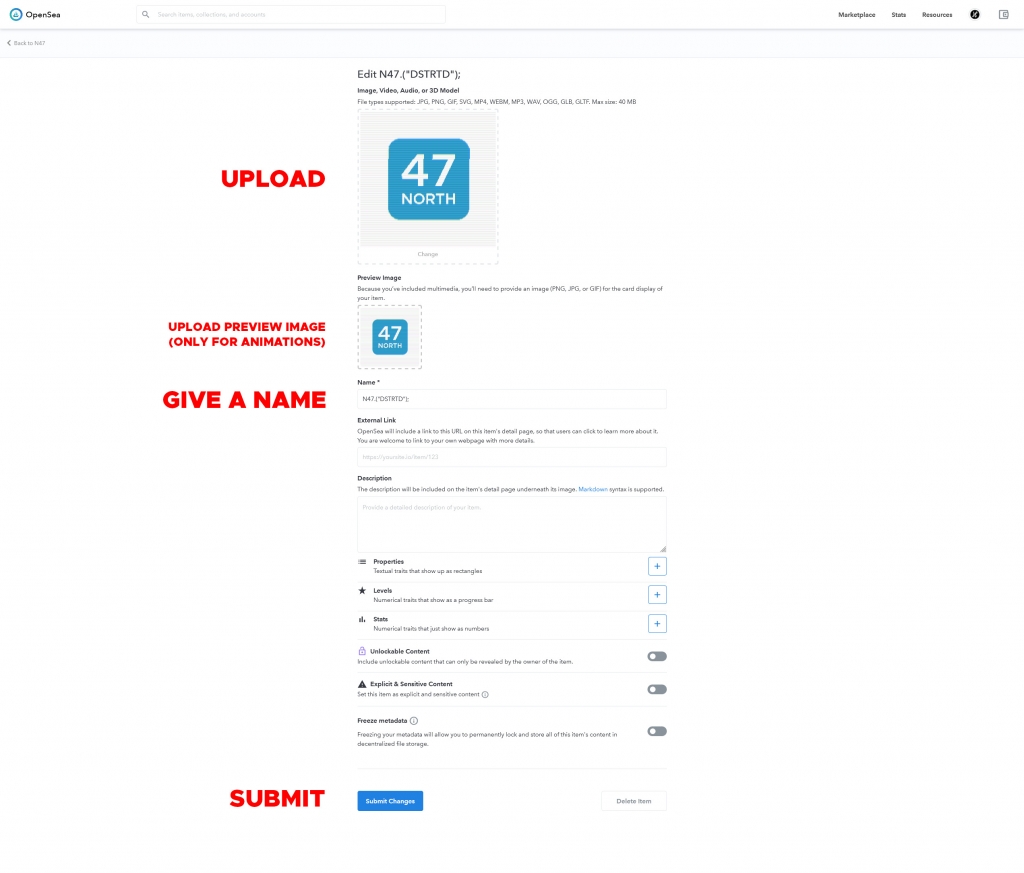
Sell your item
After you created your item inside your collection, it is ready for selling. You will have the option to sell for a fixed price or create an open auction (highest bid). I decided to go for an auction and I will let it run until the end of the year.
- Click on your item
- Click on the top right corner button “Sell”
- Select “Highest Bid” to create an open auction
- All other settings are customizable, like minimum bid, the reserve price and expiration date. I set the minimum bid to 0, the reserve price to 1 and the expiration date to 31.12.2021 (end of the year)
- Post the listing with the big blue button. Posting something the first time requires a gas fee. Depending on the time and day, this will vary. See https://ycharts.com/indicators/ethereum_average_gas_price
- Congratz! You created and listed your first NFT!
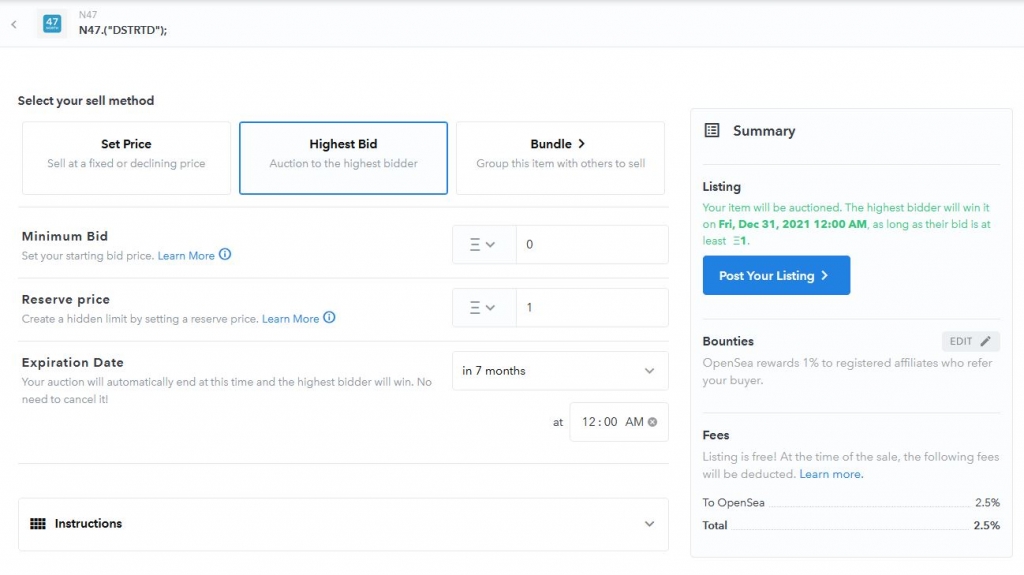
Our N47 NFT is up for sale!
Of course, I had to create an N47 NFT too! Our sale end of the year (December 31, 2021, at 12:00 am CEST). Check the listing at OpenSea and make a bid! It will be a great investment 🤑


